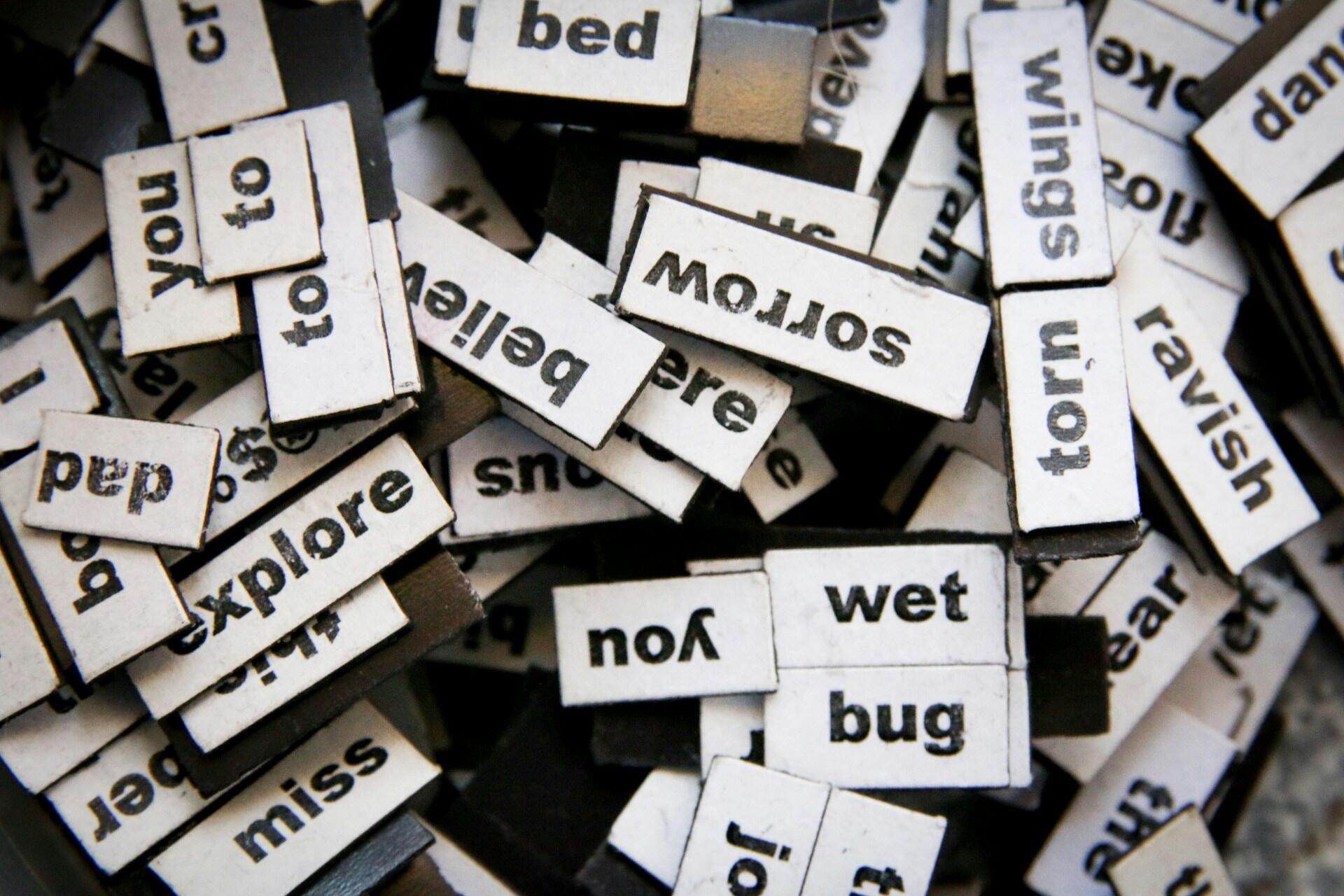The English language makes all its words out of 26 letters. Some of the letters work well together - like vowels and consonants, but others don't: a string of consonants does not make a word! So, this language is limited in the number of sounds and sound combinations it can have. That's one reason the English language uses words that sound the same to mean different things - the definition of 'homophone'.
English Language Homophones
- Homophones are words that sound the same but have different meanings and spellings.
- Homographs are words that are spelt the same but have different meanings (and, sometimes, different sounds).
- Homophones and homographs belong to the larger category of words called homonyms.
- Even native English speakers make mistakes with common homophones in English.

🤔What Are Homonyms and Homophones in English Language?
Answering that question is easy: confusing is what they are! 😵 But all jokes aside, this question deserves a serious answer.

The prefix 'homo-' gives us a clue to their meaning. 'Homo-' comes from the Greek language; it means 'the same' or 'alike'.
The second part of these words, '-nym', '-phone', and '-graph' (for homograph), tells us what is the same or alike.
The first suffix, '-nym' is also from Greek, meaning 'name'. The second one, '-phone', relates to sound and hearing. The last one, '-graph', has to do with writing. Laying them out side-by-side makes these explanations easy to see.
Homonyms (same name)
The class of words that describes homographs and homophones.
Homographs (same writing)
Words that are spelt the same but have different meanings. They may also sound different.
Homophones (same sound)
These words sound the same but have different meanings and spellings.
These are just three tricky words in the English language that confuse native speakers and language learners alike. To help you keep them straight, clip and save this chart.
| 📐Aspect | 👂Sound/pronunciation | 📝Spelling | 🔄Meaning | 🔎Example |
|---|---|---|---|---|
| Homophone | same | different | different | there / they're / their There you are! They're already gone. Their coats are nice! |
| Homograph | sometimes the same, sometimes different | same | different | Lead (led) a metal Lead (liːd) to guide something Bass (beɪs) a type of deep tone, such as a guitar Bass (bæs) a type of fish |
| Homonym | same | same | different | Lie (laɪ) Lie down if you're sleepy! Don't tell me a lie! |
😵The Most Confusing English Homophones
If you're on social media, you've likely seen your share of homophone misuse. But we can't always blame the person posting the message. Even Artificial Intelligence (AI) and software applications like talk-to-text get these homophones mixed up.
They're / There / Their
Listen closely to the audio clip, which says, "They're going over there in their car." Can you hear the difference between 'there', 'their', and 'they're'? It's okay if you say "NO!" - that's the expected answer.
These three common homophones in English are perhaps the most confusing, and the reason for most mistakes. Here's a handy trick to tell them apart:
To make things even more confusing, we could add two more of these words' homophones : 'there's' and 'theirs'. Listen carefully to this clip, where Matthew says, "Surely, there's no doubt it's theirs." Again, we'll bet you won't hear a difference.
Peak, Peek, Peke, and Pique
Two-word homophones number in the hundreds; three-word homophones are much more rare. But four-word homophones are few in number. This quartet (group of four) is one of the better known ones.
Peak
the top of something, like a mountain.
Peek
a quick look at something
Peke
short for 'pekinese', a dog breed
Pique
making one curious or interested.
Matthew gives us four sentences, each one using one of these words. Can you tell which word belongs in each sentence? 🧙♂️
Four, For, and Fore
You likely know what the first two words mean, but what about 'fore'? It means 'at the front of'; it's usually used with 'to the (fore)'. Here's Matthew again, narrating their sounds. Can you put these homophones in their proper order as he speaks?
It's and Its
Arguably, no English language punctuation mark is more misused than the humble apostrophe. And nowhere is that more evident than with the its/it's confusion.
Belonging to it.
a contraction of it + is
Can you write the sentence Matthew speaks, placing the homophones in their proper order?
This homophone is doubly confusing because it reverses this English grammar rule: "apostrophe means ownership." For example, "Sally's sweater is on the chair." means "The sweater belonging to Sally ...". The contraction 'it's' does not mean ownership. 😟
Its: the connected 's' means it belongs
It's: the separated 's' means a word apart.
Be sure to note that homophones are not the same as mispronounced English words. With homophones, the pronunciation stays the same; it's the spelling that's different.

😠Tricky English Homonyms That Change a Sentence's Meaning
Homophones are only tricky when you write them down. These aren't even weird words you've never used; they're all quite common. Speaking them doesn't mean you're making a mistake because they sound the same. However, homographs are a different story.

Cite / Site / Sight (saɪt)
Cite
Listing/saying something as a reference or proof.
Site
A specific location.
Sight
1. the ability to see
2. something you see
3. a part of a gun that helps you see the target better
With these definitions clear, it's time to remember these tricky homonyms with these easy-to-remember phrases:
Right / Write (raɪt)
As you well know, right is never left and it's always correct. On the other hand, 'write' means using a pen or pencil (or keyboard!) to put words on paper (or screen). This phrase will help you remember which is which:
English speakers write from left to right.
Copyright is a legal protection for intellectual property. (the right thing to do!)
Copywrite is what journalists (and content creators) do. (They write for a living!)
Peace / Piece (piːs)
Each person wants peace.
This is one of the trickiest homonyms in English. Considering tensions around the world, 'peace/piece' has rocketed to the top of google's 'trending' charts - and the homophone mistakes charts. Remember which one is which by noting the vowel pair in the sentence above.
😂Funny English Homophone Mix-ups and Mistakes
We might laugh at people who don't use words correctly (but that's mean, so don't!😡). However, it's perfectly fine to laugh about the goofy things they write when they mix up their homophones.

Meet / Meat (miːt)
Seen on social media: "I went to meat him but we didn't click." Oh, dear! Did that person plan to turn 'him' into barbecue? Keep 'meet' and 'meat' separate with this simple mnemonic (a memory tool):
You can eat meat but you can't eet meet.
Colon / Cologne
Another delightful social media entry, this time from someone gushing about their boyfriend: "I just LOVE the smell of his colon!"
Who are we to say what people should like to sniff? Maybe they really like the smells coming from their boyfriend's large intestine (colon's definition). But it's more likely the person posting meant 'cologne', a type of light perfume.

Bare / Bear (beəʳ)
As you likely know, 'bare' means 'no covering'. As for 'bear', the noun represents a large animal and the verb means 'to carry'. For this homophone pair, we have a collection of hilarious mistakes:
- "I can't bare it!" (is the covering glued on?)
- "She bearly ate anything!" (Did she eat like a bear?)
- "Women of child-baring age should ..." (what kind of woman 'bares' a child???)
- "He touched [the food] with his bear hands!" (must be hard for him to buy gloves!😂)
We could go on, but you get the idea. Use this mnemonic to keep 'bear' and 'bare' in their proper places (remember the vowel pairs!):
Bears have ears and can bear heavy loads but they're bare (except for their fur).
Flower / Flour (flaʊəʳ)
While searching for a pancake recipe recently, I ran across this gem:
"If the batter's too runny, add some flower to make it thicker."
We're hard-pressed to explain how this homophone mistake could happen, even using AI. Still, if you struggle to distinguish blooms from bread ingredients, remember this mnemonic:
Flowers need water, but bread doesn't. (waterflow!)
👆Tips to Remember Homophones in English Language
Does using the wrong homophone matter? Not when you speak, because they sound the same. When you write, using the wrong homophone matters a lot.
Hard-working students do their best to memorise homophones' different spellings and meanings. Still, how can we expect people to remember every same-sounding word when even native speakers and AI get them wrong?
The first step to mastering homophones in English language is to go easy on yourself. People who've spoken English their whole lives make the same mistakes you do. And the much-promoted intelligent machines make mistakes, too.
That means you're not a dummy, and you're not hopeless. You're just struggling with English homonyms, like everybody (and everything) else does.

And that's on top of struggling with other English language quirks like silent letters and weird pronunciation rules.
Once you rid yourself of the idea that you're somehow unable to learn proper English, your mind will be ready to accept new information. That's when you can adopt different learning strategies!
Throughout this article, you've read mnemonics to help you remember common homophones in English. Maybe you wrote them down as you read them? That's great! You can also use these flashcards to reinforce your learning.















